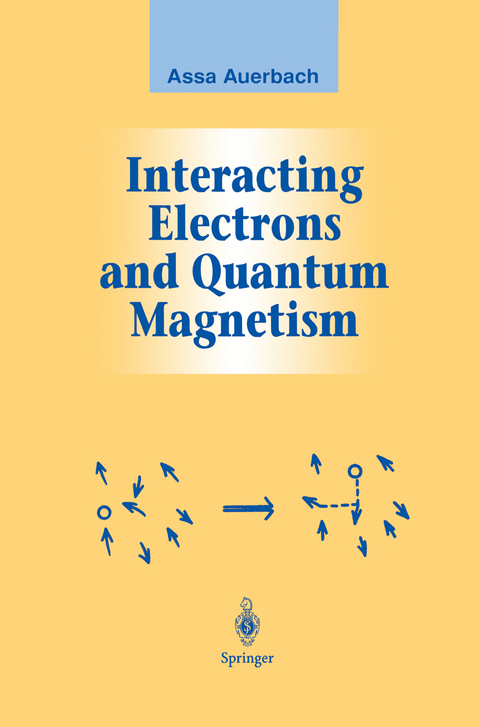
Interacting Electrons and Quantum Magnetism
Springer-Verlag New York Inc.
978-1-4612-6928-1 (ISBN)
I Basic Models.- 1 Electron Interactions in Solids.- 2 Spin Exchange.- 3 The Hubbard Model and Its Descendants.- II Wave Functions and Correlations.- 4 Ground States of the Hubbard Model.- 5 Ground States of the Heisenberg Model.- 6 Disorder in Low Dimensions.- 7 Spin Representations.- 8 Variational Wave Functions and Parent Hamiltonians.- 9 From Ground States to Excitations.- III Path Integral Approximations.- 10 The Spin Path Integral.- 11 Spin Wave Theory.- 12 The Continuum Approximation.- 13 Nonlinear Sigma Model: Weak Coupling.- 14 The Nonlinear Sigma Model: Large N.- 15 Quantum Antiferromagnets: Continuum Results.- 16 SU(N) Heisenberg Models.- 17 The Large N Expansion.- 18 Schwinger Bosons Mean Field Theory.- 19 The Semiclassical Theory of the t — J Model.- IV Mathematical Appendices.- Appendix A Second Quantization.- A.1 Fock States.- A.2 Normal Bilinear Operators.- A.3 Noninteracting Hamiltonians.- A.4 Exercises.- Appendix B Linear Response and Generating Functionals.- B.1 Spin Response Function.- B.2 Fluctuations and Dissipation.- B.3 The Generating Functional.- Appendix C Bose and Fermi Coherent States.- C.1 Complex Integration.- C.2 Grassmann Variables.- C.3 Coherent States.- C.4 Exercises.- Appendix D Coherent State Path Integrals.- D.1 Constructing the Path Integral.- D.2 Normal Bilinear Hamiltonians.- D.3 Matsubara Representation.- D.4 Matsubara Sums.- D.5 Exercises.- Appendix E The Method of Steepest Descents.
| Reihe/Serie | Graduate Texts in Contemporary Physics |
|---|---|
| Zusatzinfo | XIII, 255 p. |
| Verlagsort | New York, NY |
| Sprache | englisch |
| Maße | 155 x 235 mm |
| Themenwelt | Naturwissenschaften ► Physik / Astronomie ► Atom- / Kern- / Molekularphysik |
| Naturwissenschaften ► Physik / Astronomie ► Festkörperphysik | |
| Naturwissenschaften ► Physik / Astronomie ► Thermodynamik | |
| Technik ► Maschinenbau | |
| ISBN-10 | 1-4612-6928-8 / 1461269288 |
| ISBN-13 | 978-1-4612-6928-1 / 9781461269281 |
| Zustand | Neuware |
| Haben Sie eine Frage zum Produkt? |
aus dem Bereich


